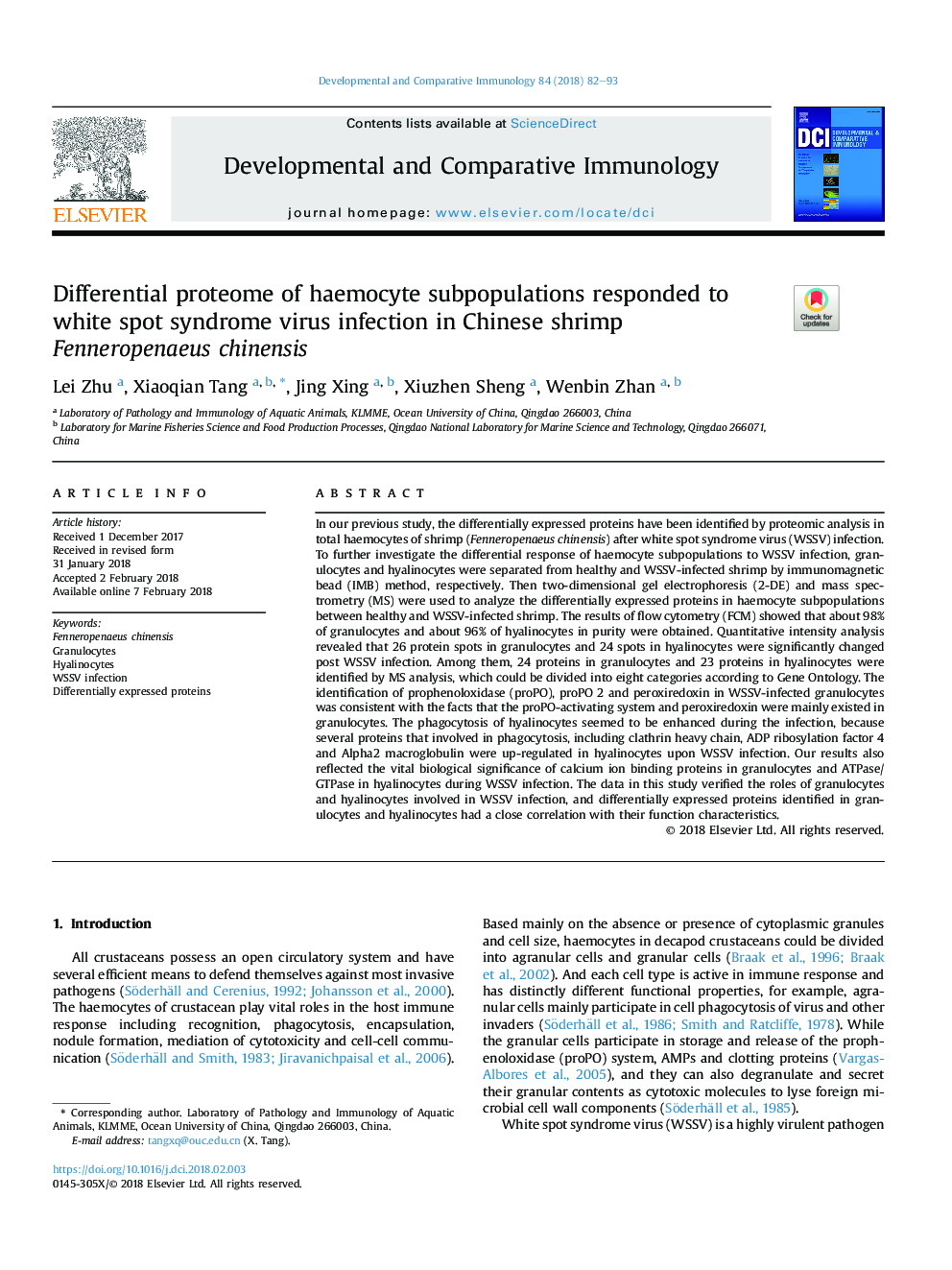| Article ID | Journal | Published Year | Pages | File Type |
|---|---|---|---|---|
| 8497710 | Developmental & Comparative Immunology | 2018 | 12 Pages |
Abstract
In our previous study, the differentially expressed proteins have been identified by proteomic analysis in total haemocytes of shrimp (Fenneropenaeus chinensis) after white spot syndrome virus (WSSV) infection. To further investigate the differential response of haemocyte subpopulations to WSSV infection, granulocytes and hyalinocytes were separated from healthy and WSSV-infected shrimp by immunomagnetic bead (IMB) method, respectively. Then two-dimensional gel electrophoresis (2-DE) and mass spectrometry (MS) were used to analyze the differentially expressed proteins in haemocyte subpopulations between healthy and WSSV-infected shrimp. The results of flow cytometry (FCM) showed that about 98% of granulocytes and about 96% of hyalinocytes in purity were obtained. Quantitative intensity analysis revealed that 26 protein spots in granulocytes and 24 spots in hyalinocytes were significantly changed post WSSV infection. Among them, 24 proteins in granulocytes and 23 proteins in hyalinocytes were identified by MS analysis, which could be divided into eight categories according to Gene Ontology. The identification of prophenoloxidase (proPO), proPO 2 and peroxiredoxin in WSSV-infected granulocytes was consistent with the facts that the proPO-activating system and peroxiredoxin were mainly existed in granulocytes. The phagocytosis of hyalinocytes seemed to be enhanced during the infection, because several proteins that involved in phagocytosis, including clathrin heavy chain, ADP ribosylation factor 4 and Alpha2 macroglobulin were up-regulated in hyalinocytes upon WSSV infection. Our results also reflected the vital biological significance of calcium ion binding proteins in granulocytes and ATPase/GTPase in hyalinocytes during WSSV infection. The data in this study verified the roles of granulocytes and hyalinocytes involved in WSSV infection, and differentially expressed proteins identified in granulocytes and hyalinocytes had a close correlation with their function characteristics.
Keywords
Related Topics
Life Sciences
Biochemistry, Genetics and Molecular Biology
Developmental Biology
Authors
Lei Zhu, Xiaoqian Tang, Jing Xing, Xiuzhen Sheng, Wenbin Zhan,
